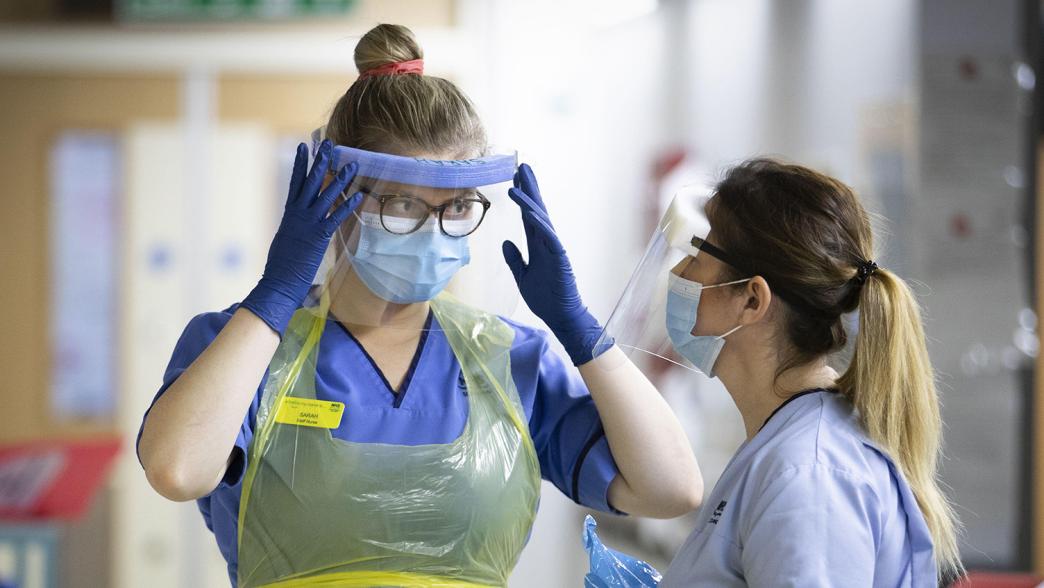The government must bring an end to its risky Covid crisis procurement
Thomas Pope says the government needs to return to normal competitive processes that offer the best value for money

While there were no good choices at the start of the pandemic, Thomas Pope says the government needs to return to normal competitive processes that offer the best value for money
Of the enormous sums of public money – £127bn in 2020/21 – spent on supporting public services during the pandemic, a substantial amount has been on procurement – buying goods and services from external providers. This includes over £15bn of Personal Protective Equipment (PPE), 16 Comptroller and Auditor General, The supply of personal protective equipment (PPE) during the COVID-19 pandemic, Session 2019-2021, HC 961, National Audit Office, 25 November 2020, p. 4, www.nao.org.uk/wp-content/uploads/2020/11/The-supply-of-personal-protective-equipment-PPE-during-the-COVID-19-pandemic.pdf various elements of the Test and Trace system and much else besides.
As the IfG’s Whitehall Monitor 2021 explored, the government has taken a different approach to procurement than it usually would, awarding many contracts without a competition. This was for understandable reasons, especially at the start of the pandemic, but it is not risk free and becomes less understandable the longer it has gone on.
The need to procure fast justified departing from ordinary best practice
During this crisis, and especially during the spring, the government had little choice but to move fast. It needed, for example, to procure huge quantities of PPE at the same time as every other government in the world and with limited global supply. Going down the normal route of competitive tendering for contracts would have taken too much time and could have left the UK suffering shortages as other countries stockpiled.
In total, of £17.3bn worth of coronavirus-related contracts up to July identified by the National Audit Office (NAO), £10.5bn (61%) were directly awarded. A further £6.7bn (39%) were (non-competitive) call-offs from framework agreements – lists of pre-approved suppliers – and only the remaining 1% was through competitive tenders. 17 Comptroller and Auditor General, Investigation into government procurement during the COVID-19 pandemic, session 2019-2021, HC 959, National Audit Office, 26 November 2020, p. 7, www.nao.org.uk/wp-content/uploads/2020/11/Investigation-into-government-procurement-during-the-COVID-19-pandemic.pdf
The crisis meant that many goods came with a premium compared to previous years. The NAO estimates that the £15bn of PPE would have cost only £2.5bn in 2019. 18 Comptroller and Auditor General, The supply of personal protective equipment (PPE) during the COVID-19 pandemic, Session 2019-2021, HC 961, National Audit Office, 25 November 2020, p. 9, www.nao.org.uk/wp-content/uploads/2020/11/The-supply-of-personal-protective-equipment-PPE-during-the-COVID-19-pandemic.pdf However, this higher price is not in itself evidence of poor value for money. It also emphasises the global shortages relative to demand which led to the price rising so quickly and so strengthens the case that the government had to move quickly.
Contracts awarded without competition have downsides
While an initial use of direct awards was necessary, it was far from ideal. In general, contracts that are subject to competition will yield the best deal for the government. Available evidence suggests, on average, a 2.5% lower cost per additional bidder. 19 Angeles L and Milne RG, ‘Competitive provision of public services: cost savings over successive rounds of tendering’, Applied Economic Letters, 2016, vol. 23, no. 9, pp. 627–32; Milne RG and Wright RE, ‘Competition and costs: evidence from competitive tendering in the Scottish National Health Service’, Scottish Journal of Political Economy, 2004, vol. 51, no. 1, pp. 1–23. And a supplier winning a competitive process is likely to come at a cheaper price than if it had been awarded the contract directly. With direct awards, the government is relying on its own information to identify the best supplier rather than allowing bidders to come forward. In some instances, such as the £108m PPE contract offered to PestFix, a small pest control company with no prior track record, the failure to go through the process can be costly and lead to inappropriate suppliers winning contracts. 20 Bostock B, ‘The UK government is being sued for awarding a pest-control company with 16 employees a $135 million PPE contract’, Business Insider, 15 June 2020, retrieved 14 January 2021, www.businessinsider.com/uk-government-sued-pest-control-company-ppe-contract-2020-6
The other risk of direct awards, beyond poor value for money, is that it makes decisions vulnerable to accusations of cronyism. The competitive tendering process is a check on cronyism – real or perceived. This has not been helped by poor record keeping about the justification of some decisions and the use of the ‘high priority lane’ for PPE contracts, whereby businesses based on leads from ministers or officials were 10 times more likely to win a contract. While this may have existed for good reasons given the need to identify suppliers quickly, it is another reason why a transparent competitive process should be preferred where possible.
The government needs to get out of ‘crisis mode’ and call time on abnormal procurement
A greater use of direct awards, and less use of competitive processes, than usual continued beyond the early days of the crisis. Test and Trace contracts, many of which came later in the crisis, were often direct awards or call-offs from framework agreements. This suggests that, at least as of late summer, procurement was still operating as if it were the start of the pandemic, with the downsides that direct awards entail.
There is much less justification for eschewing competitive processes at this stage, when needs can be more easily anticipated and there are fewer concerns around global shortages. The fact that these patterns have continued suggests that, in some cases, non-competitive awards might be becoming the ‘new normal’.
This would be bad news, both for public confidence in the government and to ensure value for money for the taxpayer. While best practice procurement approaches were necessarily sidestepped in the spring, it is time for the government to get out of ‘crisis mode’.
- Supporting document
- whitehall-monitor-2021.pdf (PDF, 5.68 MB)
- Topic
- Coronavirus Procurement
- Keywords
- Health Outsourcing
- Administration
- Johnson government
- Publisher
- Institute for Government